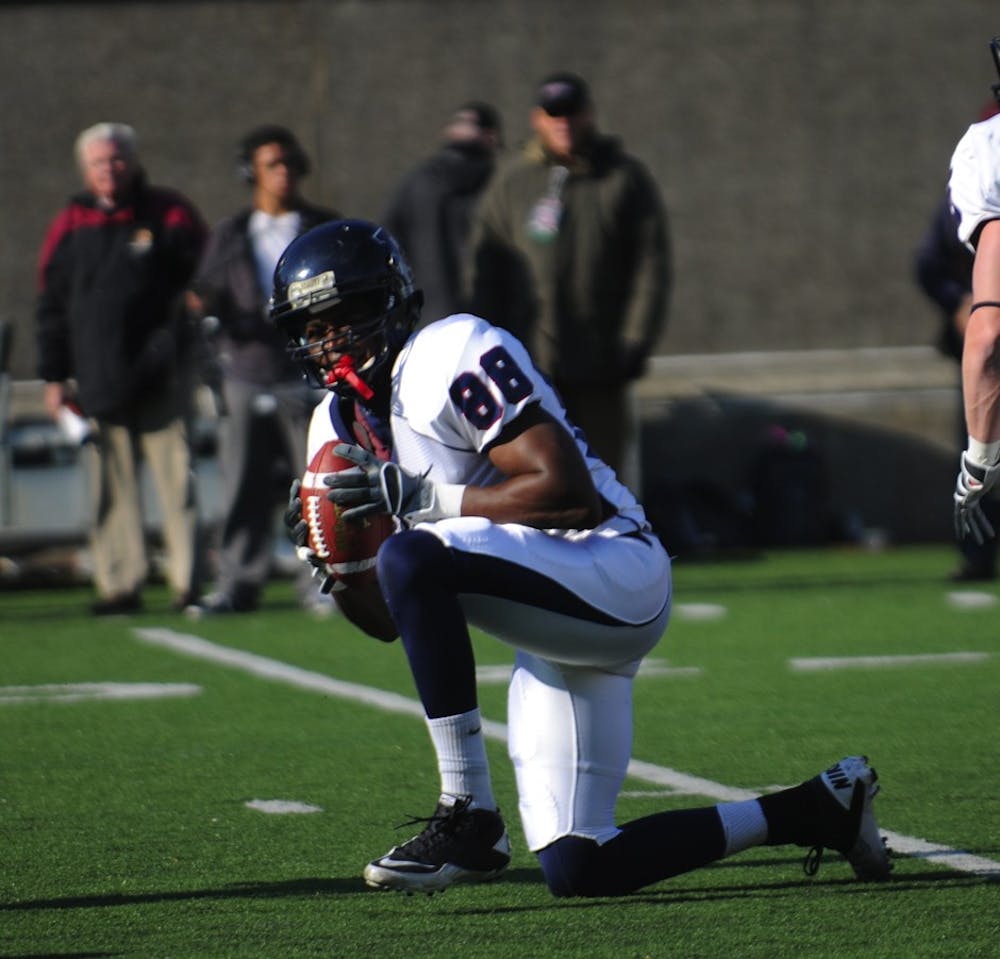If head football coach Al Bagnoli had his “druthers,” he says, his Quakers wouldn’t be facing Villanova and William & Mary this season.
The main reason? Scholarships.
While Penn, Villanova and William & Mary are all members of the Division I Football Championship Subdivision, they have not been created equally.
As members of the FCS, Villanova and William & Mary are allowed 63 scholarships for their football program. Taking into account partial scholarships, these teams are allowed up to 85 players on their roster receiving some form of athletic-based aid.
As it happens, Penn is also a member of the FCS and as such, is afforded the same privilege of bestowing scholarships upon its athletes. Unlike these non-conference opponents, however, Penn is a member of the Ivy League, a consortium of eight institutions of higher learning that famously eschew scholarships as well as the FCS postseason.
The prospect of attending college at a discounted rate or on a “full ride” is a powerful incentive for high school athletes, especially as the frustration with the cost of college continues to build.
As such, the scholarship divide creates more immediate differences between the two sides. One of the most notable is size.
There are six players tipping the scales at over 300 pounds for Villanova (five for William & Mary, 11 for Lafayette) compared to just one for Penn.
The Quakers do have some big guys at 295, but only senior Dan Saris, who has not seen varsity action for the Quakers, cracks the three-bill mark.
Any football player will tell you that size isn’t everything, but being big sure helps (I’m looking at you, Haloti Ngata).
If the Penn football schedule continues to feature Lafayette as an early-season opponent, the divide will only grow larger. Beginning in the fall of 2013, the Patriot League will permit the offering of football scholarships at its constituent schools. Look for schools like Lafayette and Lehigh to start snagging recruits that may have otherwise played in the Ivy League.
This year, but especially in the future, Penn will be playing against teams that compete at a different level.
Bagnoli expressed concern for his team. “Now we have three full-scholarship teams that we’re playing and so if we can survive … my biggest scare honestly is just surviving the early schedule, I mean it’s gonna be brutal for our kids.”
Indeed, the Quakers seem to have suffered a disproportionate number of injuries against non-Ivy opponents. Notable examples include current senior wide receiver Joe Holder having his season end in 2010 against Villanova and senior running back Lyle Marsh missing the majority of the last two seasons after two different injuries against non-Ivy teams.
While the current talent gap is not so great as to seriously endanger player safety, the fact is that these teams are operating under different rules than the Quakers.
With the Patriot League moving to full scholarship status beginning in the fall of next year, Penn’s non-conference contests will continue to be played against teams that are bigger and more talented.
At the end of the day, Penn should be doing what’s best for the program.
Given that the Quakers haven’t beaten Villanova in 101 years and the Patriot League is about to pack its ranks with scholarship athletes, it’s becoming more difficult to believe that these games are beneficial to the health of the program.
ETHAN ALTER is a senior history major from Los Altos, Calif. He can be reached at dpsports@theDP.com.



